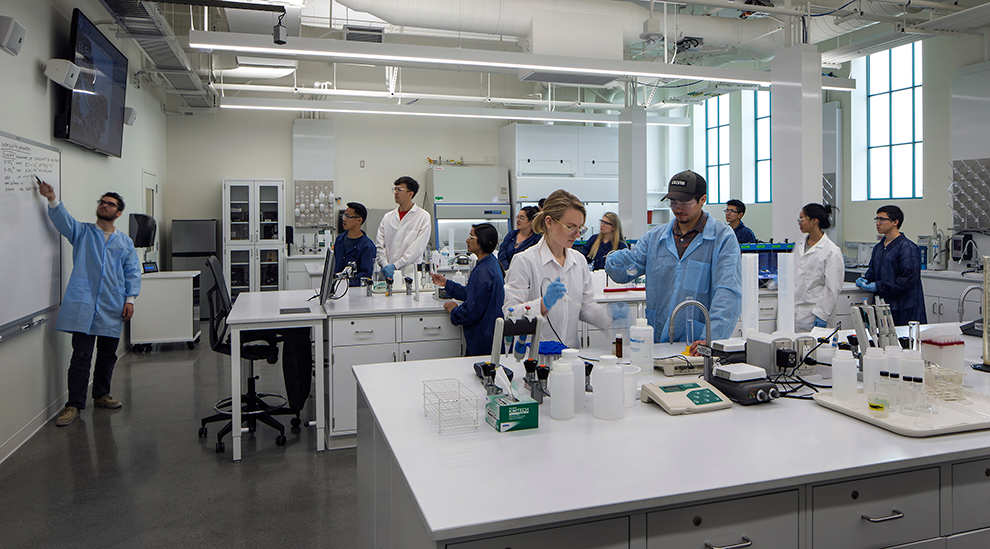Fighting the Flu When COVID-19 Looms
Now more than ever, its important to get flu shots given the COVID-19 pandemic.

Influenza season is back again, but this time it has a whole different feel and health experts say those familiar flu-fighting tips are more urgent than ever.
The flu strikes in the fall and winter, hitting its peak between December and February.
Flu shots are typically available starting in September for everyone, and this year, medical experts are urging the public to get vaccinated early, given the COVID-19 pandemic. That’s because flu symptoms can closely resemble those of COVID-19, which can lead to confusion and stress. Preventive measures will extend protection for the entire community.
SDSU NewsCenter spoke with SDSU Student Health Services interim medical director Dr. Rory Brening, and Libby Skiles, director of Student Health Services, about the importance of getting flu shots and precautions to take as we head into the fall.
Why is it more important now than ever for everyone to get flu shots, and get them early?
Brening: Influenza is a potentially serious disease that can lead to hospitalization and sometimes even death. Vaccination is particularly important for people who are at high risk of serious complications, such as those who have asthma or other chronic medical conditions. It is best to get vaccinated early in the fall, before flu viruses begin spreading in the community, since it takes about two weeks after vaccination for antibodies to develop in the body and provide protection against the flu.
Skiles: With the ongoing COVID-19 pandemic, it’s critically important that our community gets vaccinated. This is for both the health and well-being of our individual community members as well as to prevent community health and access issues that would arise from having to respond to this pandemic and significant levels of influenza in the community.
Where can SDSU students get flu shots? When will they be available?
Skiles: Students will be able to get a flu shot through Student Health Services at no cost starting October 1. Students will be able to schedule an appointment for a flu shot in HealtheConnect, our secure online health portal.
What should we be concerned about during the flu season, which will overlap COVID-19?
Brening: This year we anticipate COVID-19 to be circulating in the community along with influenza virus. The clinical features of COVID-19 overlap substantially with influenza and other respiratory viral diseases. Transmission risk is increased when people are in close contact with others, particularly in indoor environments.
Skiles: We ask our community to continue to focus on those essential prevention techniques, such as handwashing, wearing facial coverings, and using physical distancing. These measures help prevent both influenza and COVID-19.
If we fall sick, how do we know if what we have is the flu or possibly COVID-19? What initial steps should someone take if feeling ill?
Brening: Unfortunately, there is no sure way to distinguish among them without testing. This makes it more important than ever to get an influenza vaccine this year. If you feel ill, stay at home and contact your healthcare provider.
Skiles: It may help to consult a fact sheet comparing respiratory illness symptoms. A runny nose is more likely to be a cold, allergy or the flu, and shortness of breath and chest tightness are both more common to the coronavirus. What you’ll notice, however, is that there are many symptoms that are seen both in the flu and COVID-19, including a cough and fever, and that it’s very difficult to rule out either one. Remember, they’re both serious conditions, so if you experience symptoms, we recommend consulting with your medical provider.
What are some healthy preventive measures we should follow? And what would you like the community to know about the SDSU Healthy Habits flu season campaign?
Brening: There are several general preventive measures that will decrease the risk of spreading or becoming infected with influenza or COVID-19. Always cover your coughs and sneezes, stay at home if you are sick, and wear a facial covering indoors and outdoors. Avoid close contact with others, crowded places and mass gatherings.
In addition:
- Regularly wash hands with soap and water for at least 20 seconds or use an alcohol-based hand sanitizer.
- Avoid touching your eyes, nose and mouth with unwashed hands.
- Avoid sharing food, cups or utensils.
- Avoid high-touch surfaces such as door knobs.
- Clean and disinfect frequently touched objects and surfaces, particularly in a shared environment.
For more information, please visit the SDSU COVID-19 website and the SDSU Student Health Services site.



